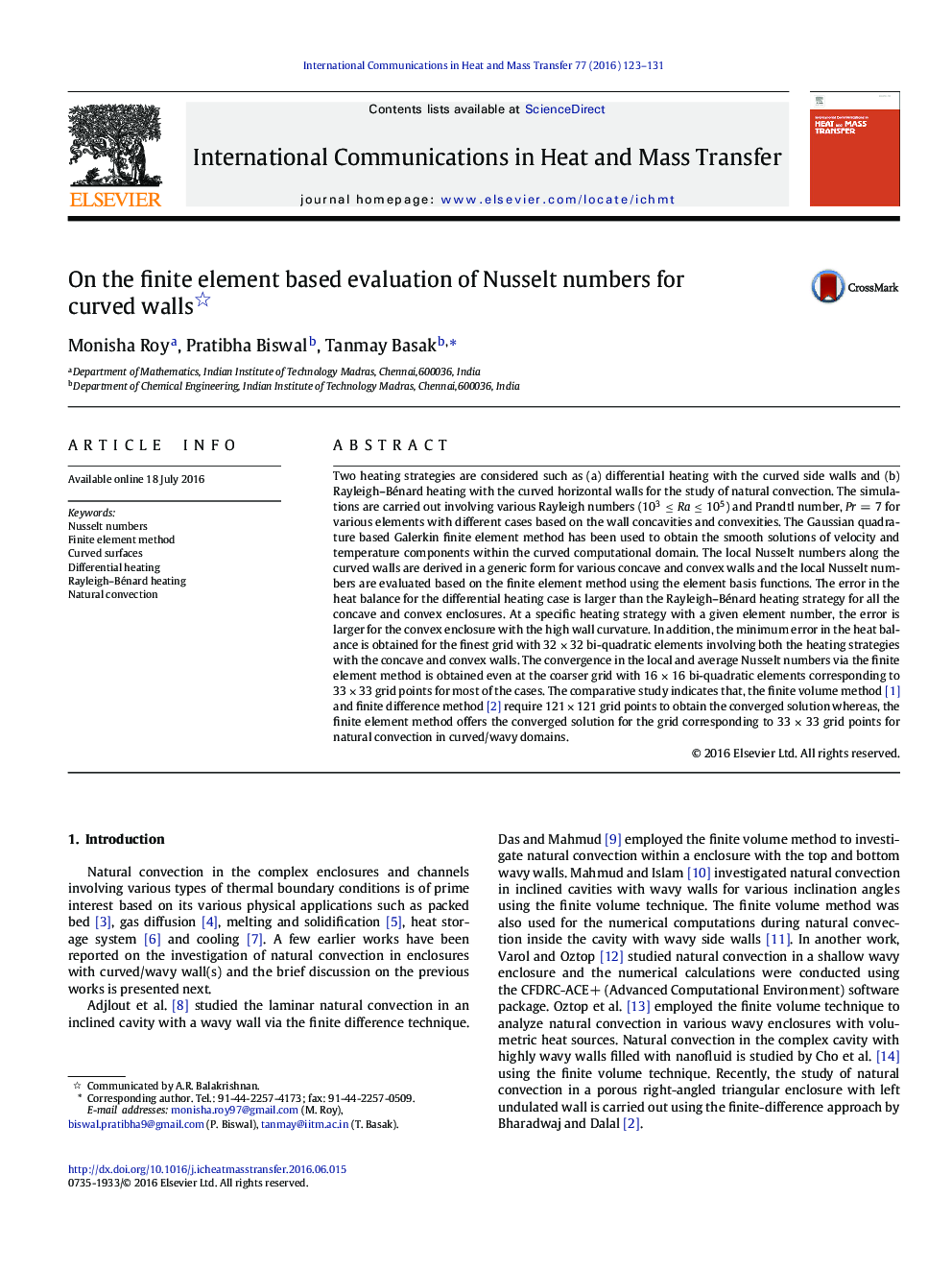| کد مقاله | کد نشریه | سال انتشار | مقاله انگلیسی | نسخه تمام متن |
|---|---|---|---|---|
| 652825 | 1457477 | 2016 | 9 صفحه PDF | دانلود رایگان |

Two heating strategies are considered such as (a) differential heating with the curved side walls and (b) Rayleigh–Bénard heating with the curved horizontal walls for the study of natural convection. The simulations are carried out involving various Rayleigh numbers (103 ≤ Ra ≤ 105) and Prandtl number, Pr = 7 for various elements with different cases based on the wall concavities and convexities. The Gaussian quadrature based Galerkin finite element method has been used to obtain the smooth solutions of velocity and temperature components within the curved computational domain. The local Nusselt numbers along the curved walls are derived in a generic form for various concave and convex walls and the local Nusselt numbers are evaluated based on the finite element method using the element basis functions. The error in the heat balance for the differential heating case is larger than the Rayleigh–Bénard heating strategy for all the concave and convex enclosures. At a specific heating strategy with a given element number, the error is larger for the convex enclosure with the high wall curvature. In addition, the minimum error in the heat balance is obtained for the finest grid with 32 × 32 bi-quadratic elements involving both the heating strategies with the concave and convex walls. The convergence in the local and average Nusselt numbers via the finite element method is obtained even at the coarser grid with 16 × 16 bi-quadratic elements corresponding to 33 × 33 grid points for most of the cases. The comparative study indicates that, the finite volume method [1] and finite difference method [2] require 121 × 121 grid points to obtain the converged solution whereas, the finite element method offers the converged solution for the grid corresponding to 33 × 33 grid points for natural convection in curved/wavy domains.
Journal: International Communications in Heat and Mass Transfer - Volume 77, October 2016, Pages 123–131